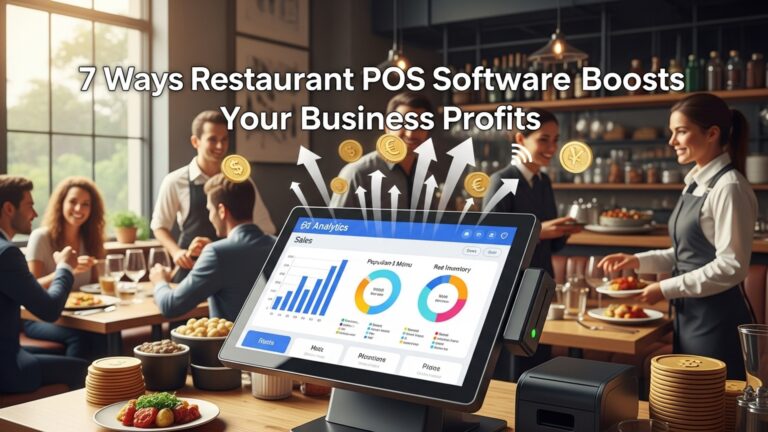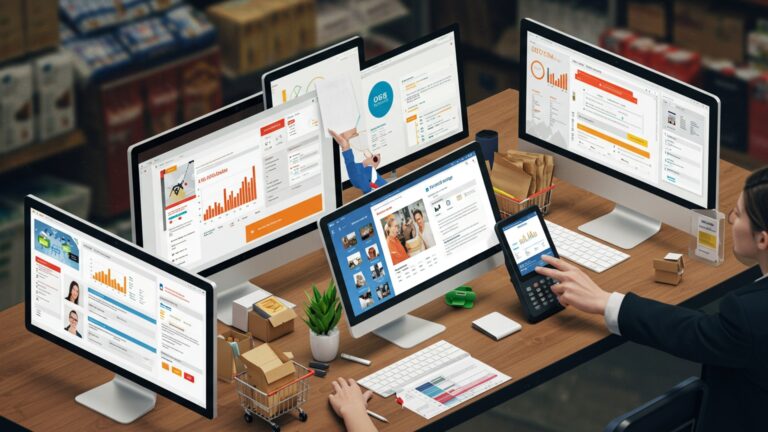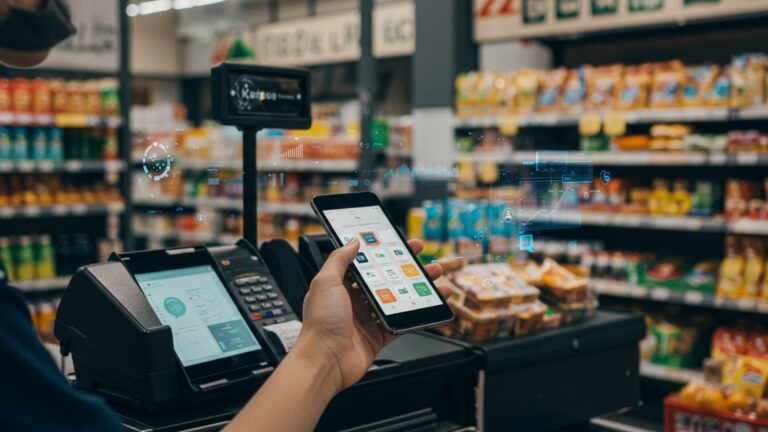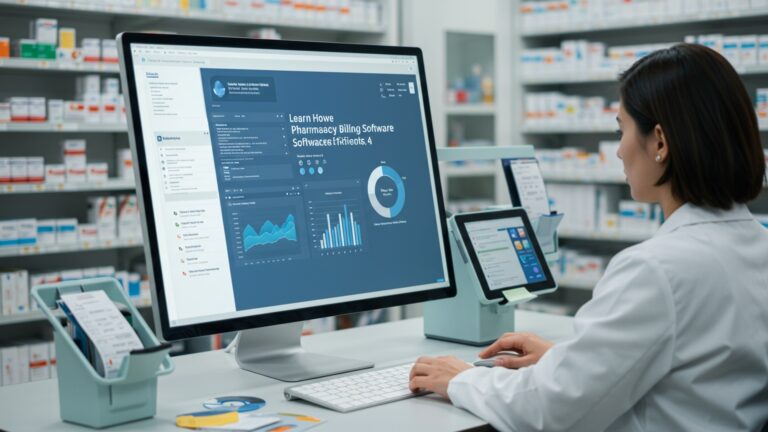How to Choose the Best Restaurant POS System for Your Business Needs
The modern restaurant landscape demands more than just a cash register; it requires a robust central nervous system to thrive amidst evolving customer expectations and operational complexities. From managing dynamic menus and integrated delivery platforms to facilitating contactless QR code ordering and optimizing real-time inventory across multiple locations, the right Restaurant POS software now defines efficiency and profitability. Recent advancements, driven by the surge in off-premise dining and the imperative for streamlined labor, mean legacy systems often fall short, struggling to provide actionable data insights or integrate seamlessly with essential third-party aggregators. Choosing an adaptable, cloud-based solution becomes crucial, not merely for processing payments but for empowering data-driven decisions that elevate the entire dining experience.

Understanding Restaurant POS Systems: More Than Just a Cash Register
In today’s fast-paced culinary world, a traditional cash register simply won’t cut it. The term “POS” once conjured images of simple transaction terminals. modern Restaurant POS software has evolved into the central nervous system of a successful dining establishment. POS stands for Point of Sale. at its core, it’s a system where your customers make payments for goods or services. But, for restaurants, it’s a sophisticated ecosystem that manages everything from order taking and payment processing to inventory control, staff management. detailed sales analytics.
Imagine a chef trying to run a kitchen without a clear understanding of their ingredients, staff availability, or customer preferences. That’s what a restaurant operates like without robust Restaurant POS software. These systems streamline operations, reduce human error, enhance customer experience. provide invaluable data for strategic decision-making. They are critical for efficiency, profitability. staying competitive in a challenging industry.
Key Features to Look for in Restaurant POS Software
Selecting the right Restaurant POS software means evaluating a suite of features that address the unique demands of your business. Here’s a breakdown of essential functionalities:
- Order Management
- Inventory Management
- Customer Relationship Management (CRM) & Loyalty Programs
- Employee Management
- Reporting & Analytics
- Online Ordering & Delivery Integration
- Payment Processing
- Menu Management
- Reservations Management
This is foundational. Look for intuitive interfaces for taking orders (both dine-in and takeout), custom modifiers (e. g. , “no onions,” “extra cheese”), split checks. table management. Integration with Kitchen Display Systems (KDS) is crucial for efficient communication between front-of-house and back-of-house, reducing errors and speeding up service. Many advanced systems now offer tableside ordering via handheld devices, significantly improving order accuracy and server efficiency.
A good POS system tracks ingredients from purchase to plate. It helps monitor stock levels, identifies popular and slow-moving items. can even alert you when supplies are low. This feature is vital for minimizing waste, controlling food costs. preventing stockouts. Some systems integrate directly with suppliers for automated reordering.
Building customer loyalty is key. Your Restaurant POS software should allow you to capture customer data (with their consent), track their preferences. manage loyalty programs (points, discounts, special offers). This enables personalized marketing and encourages repeat business.
From time clocks and shift scheduling to performance tracking and payroll integration, a comprehensive POS system simplifies staff administration. It helps manage labor costs, ensures compliance. can even provide insights into individual employee sales performance.
This is where your data becomes actionable. A robust system provides detailed reports on sales trends, peak hours, menu item popularity, average check size. more. These insights are invaluable for optimizing your menu, staffing levels, marketing efforts. overall business strategy.
In the modern era, online ordering is non-negotiable. Your POS should seamlessly integrate with your website’s online ordering portal and, ideally, with third-party delivery platforms like DoorDash, Uber Eats. Grubhub. This centralizes order management and prevents manual data entry errors.
Compatibility with various payment methods is crucial – EMV chip cards, contactless payments (NFC), mobile wallets (Apple Pay, Google Pay). traditional swipe. Ensure the system offers secure, reliable. potentially integrated payment processing to streamline transactions and reduce fees.
The ability to easily update menus, prices. item descriptions across all platforms (POS terminals, online ordering) is a significant time-saver. Look for systems that support complex menu structures, including modifiers and combos.
For many restaurants, especially fine dining, integrated reservation management simplifies booking, seating. waitlist management, improving the customer experience and optimizing table turnover.
Cloud-Based vs. On-Premise Restaurant POS Software: A Critical Choice
One of the most fundamental decisions you’ll face is choosing between a cloud-based and an on-premise Restaurant POS software solution. Each has distinct advantages and disadvantages:
Also known as SaaS (Software as a Service), this system runs on remote servers and is accessed via the internet. Data is stored in the cloud.
This traditional model involves installing the software directly on your restaurant’s hardware (servers, computers). Data is stored locally.
Here’s a comparison to help you weigh your options:
| Feature | Cloud-Based POS | On-Premise POS |
|---|---|---|
| Cost Structure | Subscription fees (monthly/annually), lower upfront hardware costs. | Higher upfront cost (software license, servers, installation), lower ongoing fees. |
| Accessibility | Access data and manage operations from anywhere with an internet connection (e. g. , home, multiple locations). | Access generally limited to the restaurant premises where the software is installed. |
| Updates & Maintenance | Automatic updates and maintenance handled by the provider; minimal IT expertise required. | Manual updates and maintenance, often requiring dedicated IT staff or external support. |
| Data Security | Relies on provider’s security measures; data often encrypted and backed up off-site. Requires trust in the vendor. | You are responsible for your own data security and backups. Offers more control but requires expertise. |
| Scalability | Easily scalable for growth (adding terminals, locations) with flexible subscription tiers. | Scaling often requires significant hardware upgrades and additional software licenses. |
| Internet Reliance | Requires a stable internet connection; some systems offer offline mode for limited functionality. | Less reliant on internet for core functions; internet needed for external integrations (e. g. , online ordering). |
A small, growing cafe might find a cloud-based system ideal due to its flexibility and lower upfront cost, allowing them to manage their operations from anywhere. Conversely, a large, established restaurant chain with strict data control policies and an in-house IT team might prefer the control and customization offered by an on-premise solution.
Integration Capabilities: Connecting Your Business Ecosystem
The true power of modern Restaurant POS software lies in its ability to integrate seamlessly with other business tools. Think of your POS as the hub, connecting spokes to various essential applications. This interconnectedness saves immense time, reduces manual data entry errors. provides a holistic view of your business.
- Accounting Software
- Third-Party Delivery Platforms
- Loyalty and Gift Card Programs
- Reservation Systems
- Workforce Management
Integration with platforms like QuickBooks, Xero, or Sage automatically pushes sales data, payroll details. inventory costs, simplifying bookkeeping and ensuring financial accuracy.
As mentioned, direct integration with services like DoorDash, Uber Eats. Grubhub centralizes incoming orders directly into your POS, eliminating the need for multiple tablets and manual order entry.
Whether built-in or through third-party providers, seamless integration ensures that customer points are tracked, rewards are redeemed correctly. gift card balances are managed in real-time.
For restaurants using platforms like OpenTable or Resy, integration can allow for automatic updates to table availability and guest details within your POS.
Beyond basic time clocks, some POS systems integrate with advanced scheduling and HR platforms, offering comprehensive employee management.
Choosing a system with robust API (Application Programming Interface) capabilities or pre-built integrations is paramount. As industry expert Mike Ganino, a restaurant consultant, often emphasizes, “Your POS should talk to everything else. If it’s a silo, you’re creating more work, not less.”
Hardware Considerations: Beyond the Software
While the Restaurant POS software is the brain, the hardware is the body. The best software is only as effective as the equipment it runs on. When planning your setup, consider these essential hardware components:
- POS Terminals/Tablets
- Printers
- Cash Drawers
- Barcode Scanners
- Kitchen Display Systems (KDS)
- Payment Terminals
- Network Infrastructure
These are your primary interaction points. Options range from fixed touchscreen terminals to mobile tablets (iPad, Android tablets) for tableside ordering and payment processing. Tablets offer flexibility and enhance customer service.
You’ll need receipt printers for customers and kitchen printers for orders. Ensure they are reliable, fast. compatible with your chosen software. Thermal printers are common for receipts, while impact printers are often preferred for kitchen environments due to heat and grease resistance.
Even with increasing cashless payments, a secure cash drawer remains a necessity for many establishments.
Essential for retail components within your restaurant (e. g. , merchandise, bottled beverages) or for tracking inventory.
Digital screens in the kitchen replace paper tickets, improving order accuracy, speeding up prep times. providing better oversight of kitchen flow.
Separate or integrated devices for processing card payments. Look for EMV-compliant and NFC-enabled terminals for modern, secure transactions.
A reliable wired and wireless network is the backbone of any modern POS system, especially for cloud-based solutions. Invest in quality routers and access points to ensure stable connectivity.
A real-world example: A bustling pizzeria found that investing in durable, water-resistant tablets for their servers, along with a KDS system, drastically reduced order errors and improved table turnover during peak hours, directly impacting their bottom line.
Budgeting for Your Restaurant POS Software
Understanding the costs associated with Restaurant POS software is crucial for effective financial planning. It’s not just about the sticker price; there are several components to consider:
- Upfront Costs
- Hardware
- Setup & Installation
- Software Fees
- Subscription Fees
- Software License
- Payment Processing Fees
- Training Costs
- Support and Maintenance Fees
Terminals, printers, cash drawers, scanners, KDS screens. This can range from a few hundred dollars for basic tablet setups to several thousands for robust fixed stations across multiple locations.
Some providers charge for initial setup, data migration. on-site installation.
Most cloud-based Restaurant POS software operates on a monthly or annual subscription model, often tiered based on features, number of terminals, or locations. These can range from $50 to $300+ per month per location.
For on-premise systems, this is usually a one-time purchase. it can be substantial.
This is a critical ongoing cost. interpret the percentage per transaction, any flat fees. PCI compliance fees. Some POS providers offer integrated payment processing, which can simplify billing but compare rates carefully.
While some providers include basic training, extensive or ongoing training might incur additional fees.
Beyond standard support, premium support packages or extended warranties for hardware might have extra costs.
When calculating ROI, consider not just the cost savings from reduced errors and improved efficiency. also the revenue generation potential from better customer loyalty, faster service. optimized menu pricing thanks to data analytics.
Evaluating Support and Training: Your Lifeline
No matter how advanced your Restaurant POS software is, issues will inevitably arise. When a printer jams, an order disappears, or a payment fails during a busy dinner rush, reliable support becomes your absolute lifeline. This often overlooked aspect can make or break your experience with a POS system.
- 24/7 Support
- Onboarding and Training Programs
- Self-Help Resources
- Dedicated Account Management
Restaurants operate outside of traditional 9-to-5 hours. Ensure your chosen provider offers round-the-clock support, ideally via multiple channels (phone, email, chat).
How will your staff learn to use the new system? Look for comprehensive onboarding, initial training sessions (on-site or remote). ongoing educational resources. A good provider will have clear documentation and video tutorials.
A robust knowledge base, FAQs. user forums can empower your staff to troubleshoot minor issues independently, saving time and reducing reliance on support calls.
For larger operations, a dedicated account manager can be invaluable for long-term strategic planning and addressing complex issues.
A personal anecdote: A restaurateur I spoke with once chose a cheaper POS system only to find their “24/7 support” was an email address with a 48-hour response time. During a critical system crash on a Saturday night, they effectively lost a full night’s revenue. They quickly switched to a provider known for its rapid-response phone support, understanding that peace of mind and operational continuity were worth the extra cost.
Real-World Application: Scaling with the Right System
Consider the story of “The Daily Grind,” a local coffee shop that started with a basic tablet POS. As they grew, adding a food menu, expanding catering services. opening a second location, their initial system couldn’t keep up. They struggled with manual inventory counts, disjointed online orders. inconsistent reporting across locations.
Their solution was to invest in a cloud-based Restaurant POS software system designed for multi-location management. This new system offered:
- Centralized menu management, allowing updates from one dashboard for both locations.
- Integrated inventory tracking that automatically deducted ingredients as items were sold, providing real-time stock levels.
- A robust online ordering platform seamlessly linked to their kitchen display systems, eliminating manual order entry for deliveries and pickups.
- Detailed sales analytics that helped them compare performance between locations and identify peak times for targeted promotions.
This strategic upgrade allowed “The Daily Grind” to not only handle their increased volume but also to make data-driven decisions that fueled further growth, demonstrating the critical role of scalable Restaurant POS software. As technology continues to evolve, the right POS system isn’t just a tool; it’s a strategic partner for your restaurant’s future success.
Conclusion
Choosing the right restaurant POS system isn’t merely a tech upgrade; it’s a strategic investment that fundamentally reshapes your operations. Take the time to thoroughly assess your unique business needs—whether you run a bustling quick-service spot needing speedy order processing or a fine dining establishment prioritizing seamless table management and detailed reservation features. Don’t just settle for standard demos; insist on seeing features relevant to your specific challenges, like integrated online ordering platforms that have become indispensable since the 2020 boom in delivery services. My personal tip? Prioritize user-friendliness above all else. A system packed with features is useless if your staff struggles to navigate it during peak hours, creating bottlenecks instead of efficiencies. Test it in a simulated environment, involving your team early in the process. Remember, a modern cloud-based POS, like those offering AI-driven inventory insights or personalized customer loyalty programs, isn’t just about transactions; it’s about empowering growth and enhancing the entire guest experience. Make an informed decision. you’ll unlock a powerful engine for profitability and unparalleled customer satisfaction.
More Articles
How to Select the Best Restaurant POS System Essential Features Guide
7 Must-Have Features Your Restaurant POS Software Needs to Thrive
Tutorial 10 Best Practices for Smooth Restaurant POS System Implementation
Master 5 Smart Strategies to Boost Restaurant Efficiency Using Your POS
Discover 10 Ways Restaurant POS Software Can Grow Your Business Profitably
FAQs
What’s the very first step in picking a new POS system?
Start by listing out all the specific features your restaurant absolutely needs. Think about order taking, table management, inventory, payment processing. reporting. Knowing your ‘must-haves’ helps narrow down the options fast.
Does the type of restaurant I run really affect my POS choice?
Absolutely! A fine dining restaurant needs different features than a fast-casual spot or a food truck. Fine dining might prioritize reservation management and detailed table layouts, while a food truck needs robust mobile ordering and offline capabilities. Match the system to your operational style.
Cloud-based or on-premise: Which is better for a restaurant POS?
Most modern restaurants go with cloud-based systems. They offer more flexibility, automatic updates, remote access to data. lower upfront hardware costs. On-premise systems can be more expensive to maintain and less flexible, though some prefer them for full control.
How crucial is it for the POS to work with other software I use?
Super crucial! Look for systems that can integrate smoothly with your existing accounting software, loyalty programs, online ordering platforms. HR tools. Good integration saves time, reduces errors. gives you a more complete picture of your business.
What’s a realistic budget for a good restaurant POS system?
POS costs vary widely. Consider not just the upfront hardware and software fees. also monthly subscription costs, payment processing rates. potential installation or training fees. Get detailed quotes and compare total cost of ownership over a few years, not just the initial sticker price.
What kind of customer support should I expect after I purchase a system?
Top-notch support is crucial. Look for providers offering 24/7 support, multiple contact methods (phone, chat, email). a good reputation for quick problem resolution. A system is only as good as the support behind it when things go wrong during a busy shift.
How can I ensure the POS system will be user-friendly for my staff?
Usability is key to staff adoption and efficiency. Look for an intuitive interface, customizable menus. easy-to-grasp workflows. Ask for a demo or a free trial period. ideally, involve some of your staff in testing it out before making a final decision. Their feedback is invaluable.





